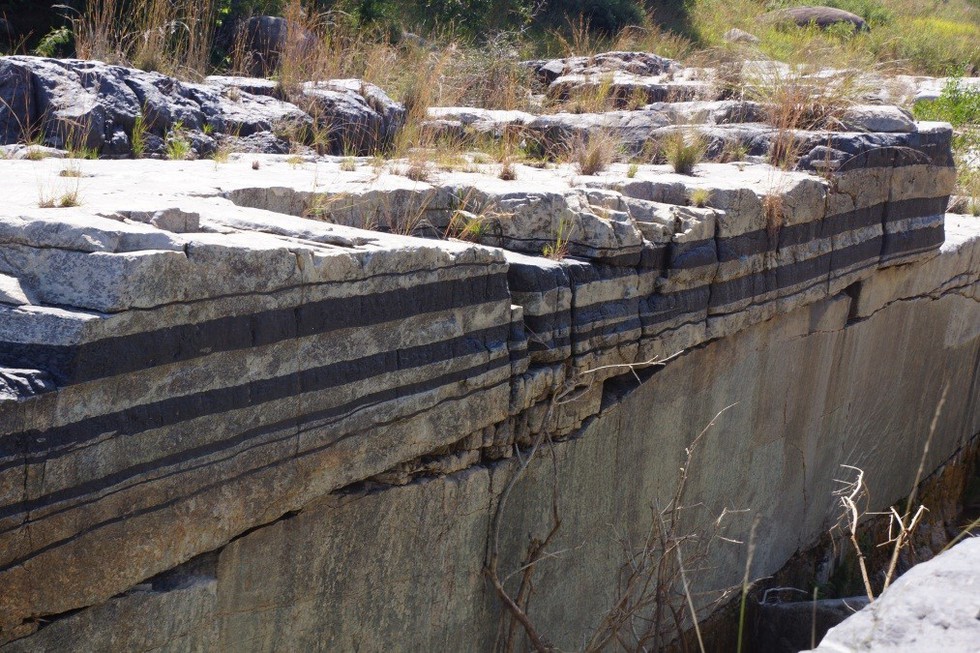About Bushveld Igneous Complex (BIC):
- It is the largest layered igneous intrusion within the Earth's crust.
- It is located in northern South Africa, exposed at the edge of the Transvaal Basin.
- It covers a pear-shaped area of over 66,000 sq.km.
- The complex varies in thickness, sometimes reaching 9 kilometres (5.6 mi) thick.
- It is renowned for containing some of the richest ore deposits.
- The complex contains the world's largest reserves of platinum-group metals (PGMs), i.e., platinum, palladium, osmium, iridium, rhodium, and ruthenium, along with vast quantities of iron, tin, chromium, titanium, and vanadium.
- BIC is divided into an eastern and western lobe, with a further northern extension. All three sections of the system were formed around the same time, about 2 billion years ago.
- Formation:
- Vast quantities of molten rock from the Earth's mantle were brought to the surface through long vertical cracks in the Earth's crust, creating the geological intrusion known as the BIC.
- The effects of these injections of molten rock over time, combined with the crystallisation of different minerals at different temperatures, resulted in the formation of a structure rather like a layered cake consisting of distinct rock strata including three PGM-bearing layers, referred to as reefs.
